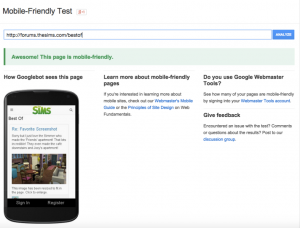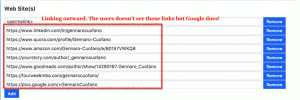— April 26, 2019
Change is easy (or hard)
Change. The word only has six letters, but invokes all sorts of emotions. Sometimes we crave it, sometimes we don’t. I remember when Windows 95 came out. It was a major event! People couldn’t wait to get their hands on it. The day it was released, the lines at the stores (remember getting software that way?) stretched for blocks. I bought it a few days later when the crowds died down and it brought about all sorts of change on my computer—I loved it.
These days, the operating software on my laptop is a number of releases old. Whenever I upgrade, there is a certain amount of dread that goes with it. Why? Because I have to learn something new. I have to change, and I don’t want to.
Implement an ERP Change Management Strategy
I don’t think I’m that different from the vast majority of the population who are somewhere between extreme avoidance of and constant need for change. I’m going to focus on ERP change management for the large group of us that are in the middle.
For your ERP implementation plan to be successful, you first must understand that having a solution to a problem does not assure change will take place. If that was the case, everyone would eat healthy, no one would smoke, and we’d all floss. Change takes place when all of the following areas are addressed:
- The problem is understood and viewed as a problem. If you can’t get past this step, permanent change will not take place. Temporary change could happen, but things will drift back to how they were before. If problems are consistently misunderstood and only addressed with temporary solutions, resistance to any change grows.
- The solution is understood and viewed as a fix to the problem. There is a difference between having a solution to a problem and having a solution you can actually implement. I can drastically improve my travel experience by flying on a private jet, but there is a cost barrier I can’t get over, so it’s really not a solution for me. (I’ll just need to stick with having a glass of wine at the airport.) Just as everyone needs to agree there is a problem, everyone needs to agree to a workable solution.
- A new procedure is developed that incorporates the solution. If a new procedure isn’t developed and used, then no change has taken place. Develop the new procedure, test it, get input from those that need to use it. Resistance to ERP change management plans are lowered when people see the change is resulting a positive outcome.
- Unintended consequences of the new procedure are addressed. Every change has unintended consequences … some good, some bad. The good unintended consequences need to be acknowledged! The solution is even better than we thought! The bad unintended consequences must also be addressed. Ignoring them will slowly unravel the ERP change management strategies that were made. If unraveling begins, take care of it before it grows into a bigger problem than it really is. If you find a bad unintended consequence is actually worse than the original problem you were trying to solve, drop back to the original procedure and come up with a new solution.
- A method is developed that reveals when the new procedure is not followed. When I was a plant manager and needed to implement a barcode labor tracking system, I spent more time getting the employees to understand why not having labor reporting was a problem than I did on teaching them how to successfully report their labor. (If people don’t think a problem is being solved, they will resist change.)
After the first day of labor reporting, I ran a report of the employees who didn’t report their labor. There were only a few, but they were clearly testing me and betting this labor reporting stuff would go away. I met each one of them the next morning when they came to work and nicely asked why they didn’t report their labor the day before. Each one gave a lame excuse. I then asked if they were going to do it today, and they all said they would. I had no problems after that. My real message that morning was that I had the ability to know who didn’t follow the new procedure; and I would quickly address it with that person. This reinforced that everyone needed to follow the new procedure.
- The new procedure is followed consistently until “new” is dropped and it becomes just “the procedure.” A new procedure is like a newborn baby. They both need nurturing and care until they can be on their own. Fortunately, the new procedure needs a lot less nurturing and care than a child, but it still needs it. Remember, there is a natural resistance to ERP change management. Nurture the new procedure until it’s not new anymore. Then, resistance to change will work in your favor. No one will want to change it!
Implementing ERP can be done successfully – learn how.
Business & Finance Articles on Business 2 Community
(41)
Report Post





